D.C. Circuit Review – Reviewed: Looking for a Theme …
The D.C. Circuit was busy this week — really busy:
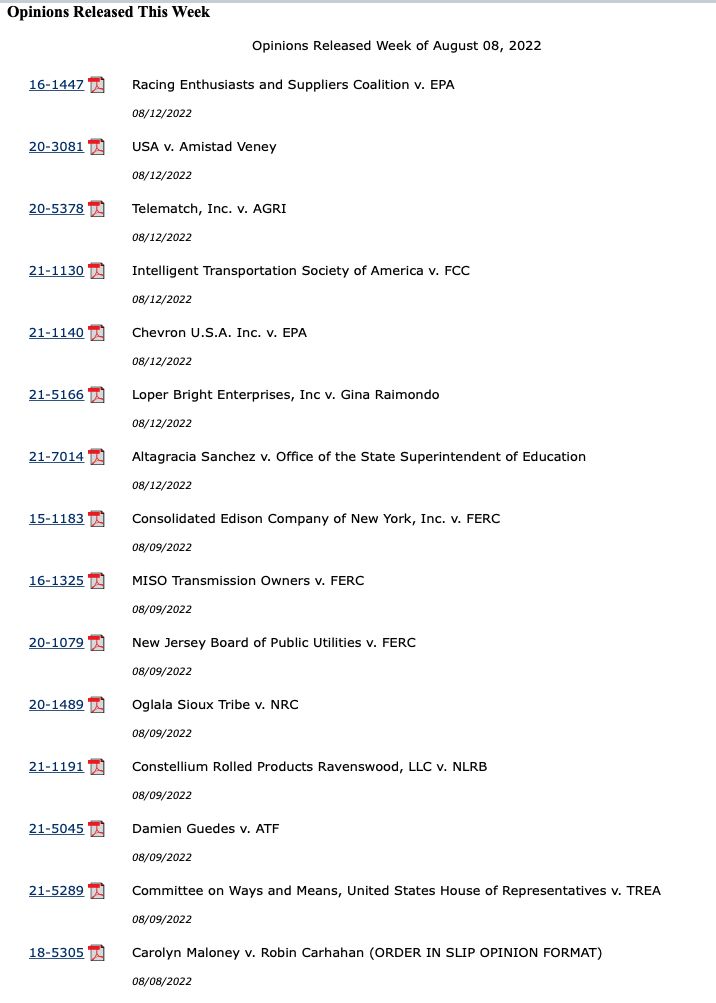
This creates a problem for a blog series like this one that attempts to tie together opinions based on themes. Of course, I could play the * game.* Or I could come up with a theme that is so general that it serves no function at all. Instead, I’ve decided to try to come up with groupings that at least hopefully provide a rough sense of what the case are about.
Let’s start with Admin Law v. Non-Admin Law:
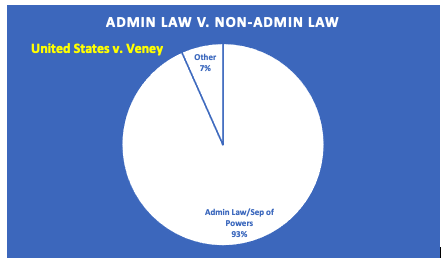
For purposes of Notice & Comment, this is the main division. Unfortunately, if “admin law” is read broadly enough to include separation-of-powers disputes, dividing case this way doesn’t help very much.
One theme, however, that did catch my attention was cases about Money:
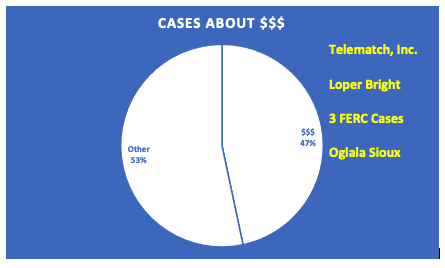
Of course, most cases are about money, in a sense, but almost a majority of the cases this week directly concern rates, fees, salary, and payment conditions, etc. And there are some really interesting “$$$” cases in this mix. In Loper Bright, Judge Rogers — over Judge Walker’s dissent — upheld “a rule that required industry to fund at-sea monitoring programs” and in Oglala Sioux Tribe, Judge Rao rejected an argument that the agency did not “spend[] enough time or money on a survey and effectively forc[ed] the Tribe to subsidize it.” Constellium — per Judge Wilkins, dissent by Judge Sentelle — concerns what happens when an employee engages in potentially harrassing conduct as part of a labor fight over overtime pay. Telematch (per Judge Katsas) concerns whether the Freedom of Information Act requires the Agriculture Department to disclose “numbers to plots of enrolled farmland and to their owners” as part of “its farm subsidy programs.” (It does not.)
Another theme this is Pictures. Three cases this week come with pictures:
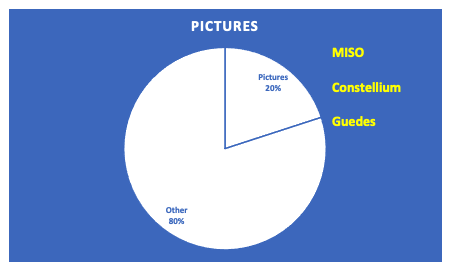
If you are interested, here are some examples. First, from MISO (a FERC rate case penned by Judge Walker):
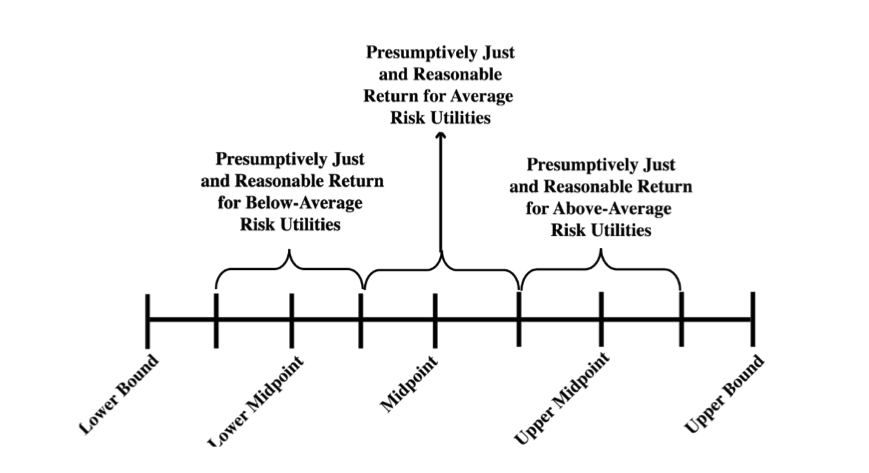
And here is the picture in Guedes (an important case about “bump stocks” that Judge Wilkins, for the Court, resolved in the government’s favor):

(I’ll skip the imagine from Constellium.)
How about Cases Relatively Likely To Prompt a Cert Petition?
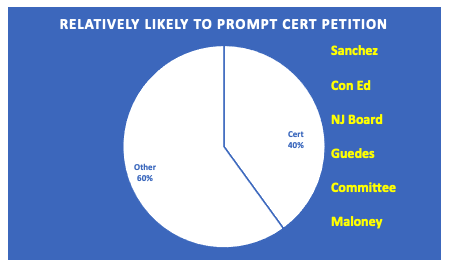
I could be completely wrong about this chart — it is hard to know what litigants will do. But these case strike as the most likely to prompt a petition. Sanchez (per Chief Judge Srinivasan, with Judge Randolph concurring) contains an unsuccessful nondelegation challenge, albeit in the unusual context of D.C. law. If you are interested in nondelegation, though, this paragraph will surely command your attention:
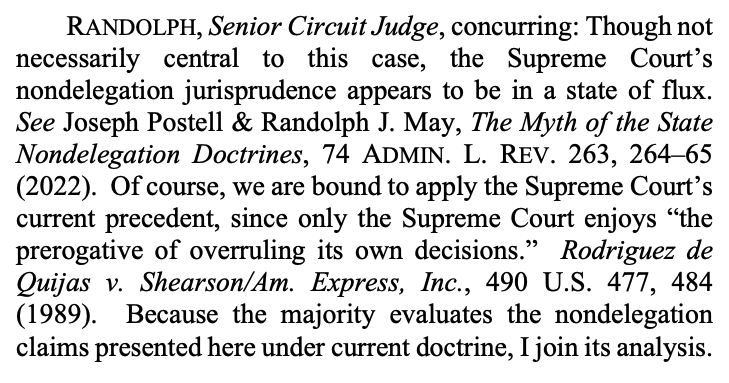
The two FERC cases in this chart (which are consolidated and decided in a per curiam opinion) are included because so many litigants are involved:

It is easy to include Guedes because it has already prompted a petition to the Supreme Court.
Committee on Ways and Means (per Judge Sentelle with Judge Henderson concurring in part) includes this discussion (if it interests you, you definitely need to read the whole opinion):
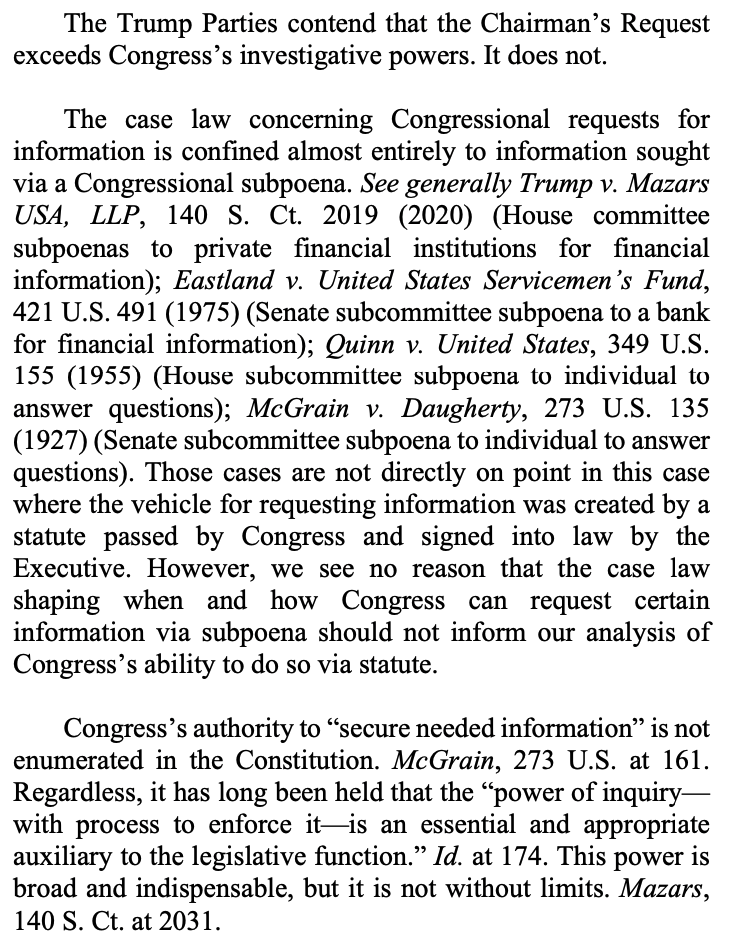
And Maloney is an order denying rehearing en banc in a case about legislative standing with this line-up:
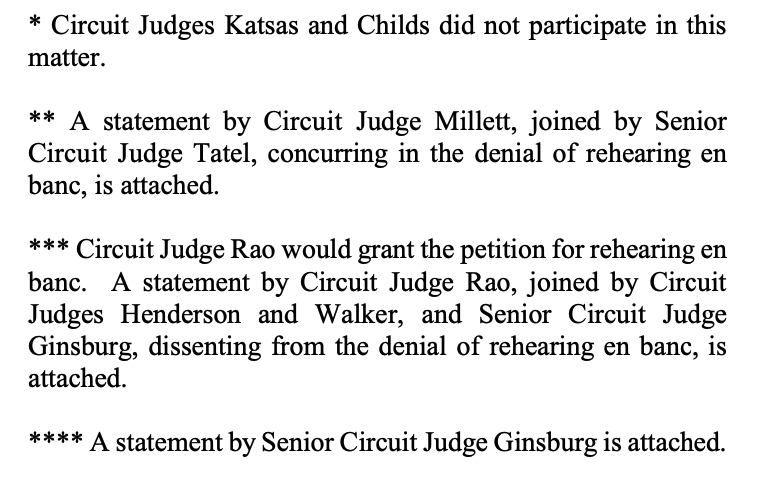
Next, Cases Involving Chevron Deference:
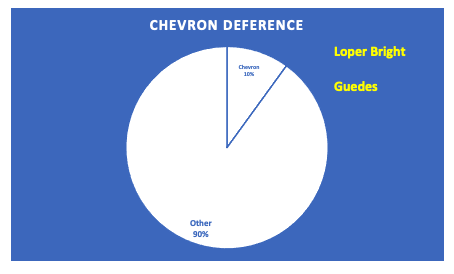
If you are reading D.C. Circuit Review – Reviewed, you probably track Chevron. There wasn’t a lot of deference this week, however. I count 1.5 deferences cases — and that isn’t including Chevron v. EPA (which, per Chief Judge Srinivasan, does not reach the merits because “EPA’s response letter is locally or regionally applicable,” meaning “that venue over Chevron’s challenge lies exclusively in the United States Court of Appeals for the Ninth Circuit”). How do I get 1.5? Well, Loper Bright is all about deference; the Court explicitly deferred to the agency, over Judge Walker’s dissent. Here is a key paragraph setting forth the disagreement:
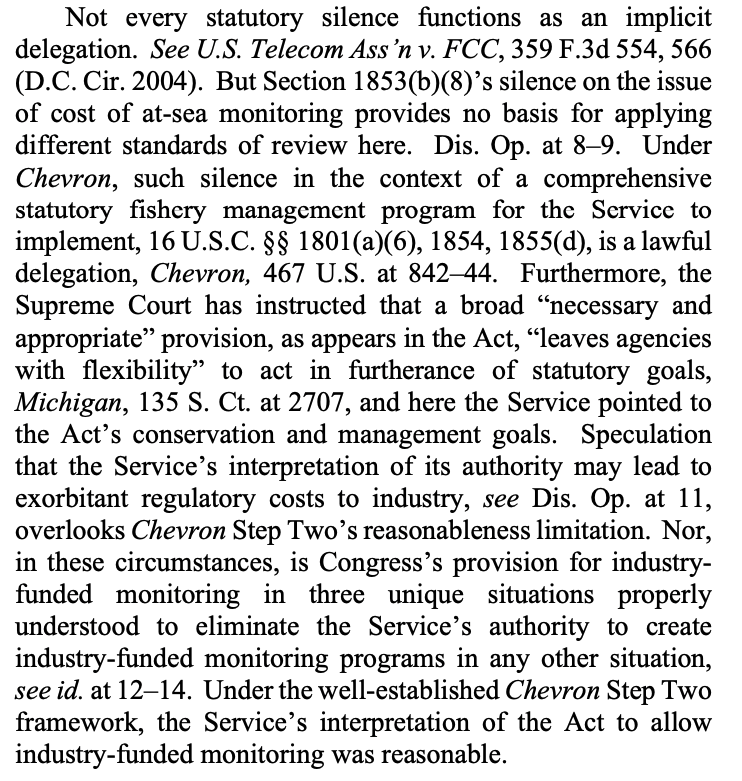
I’m counting Guedes for half, however, because of this discussion:
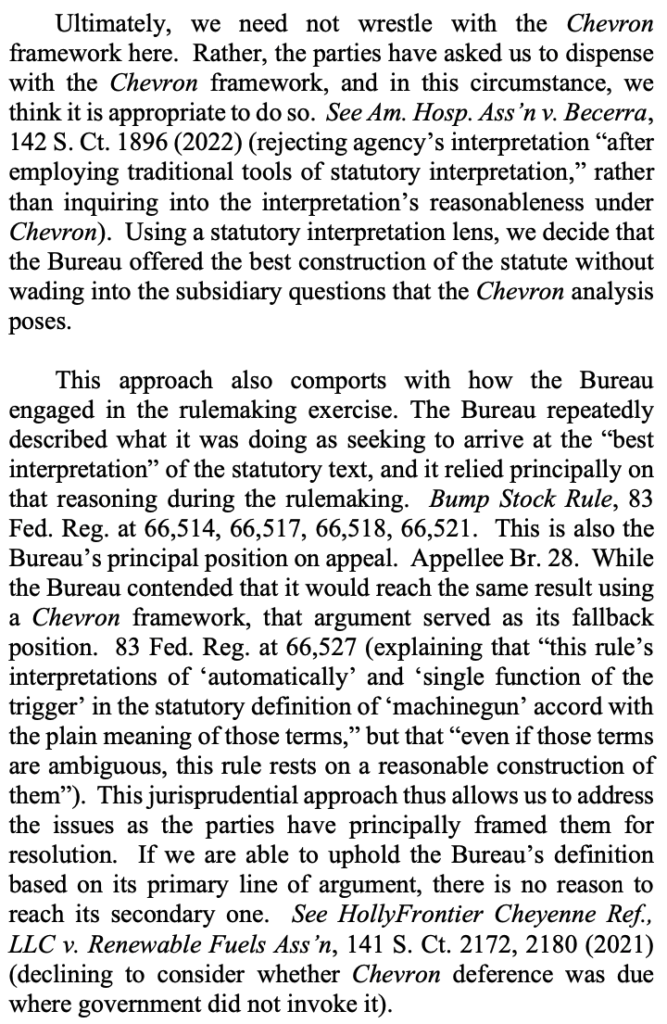
I’m not including the consolidated FERC cases, however, though this is an interesting passage:
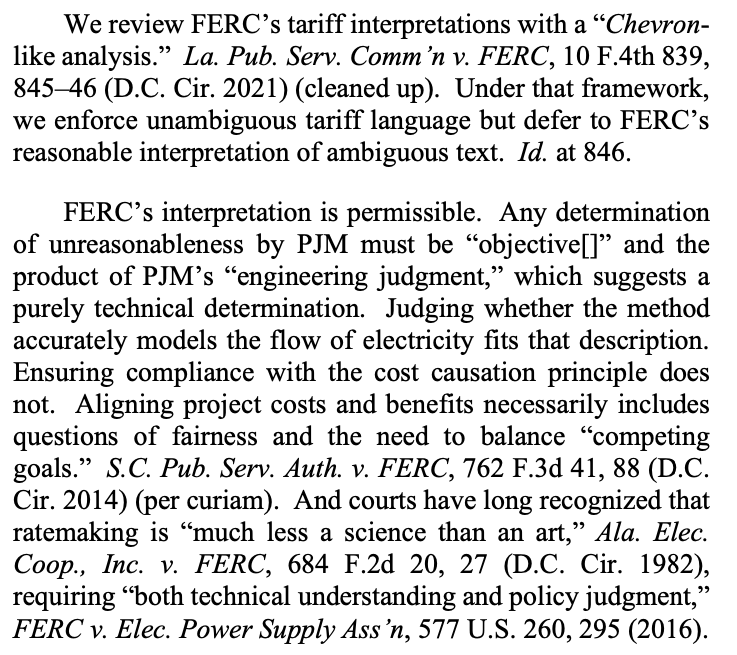
Finally, why not end with Cases Involving Race Cars?
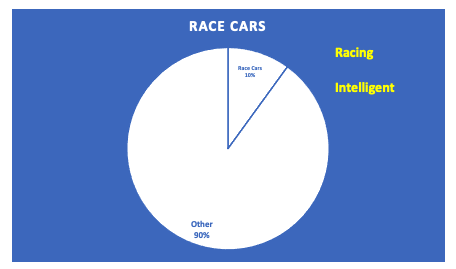
This is also another 1.5 category. Racing Enthusiasts (per Judge Walker, finding lack of standing and lack of final agency action in a case involving EPA regulation of “the practices of amateur racers and the businesses that make and sell them car parts”) is an easy call:
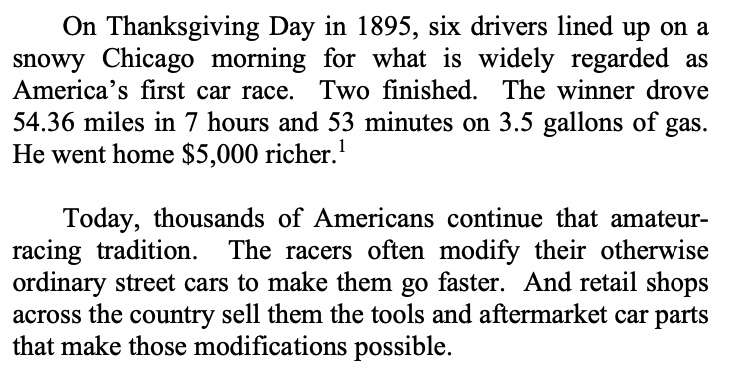
But I’m also counting Intelligent Transport Systems (also per Judge Walker, about spectrum allocation for transportation systems that “allow[] vehicles to communicate with each other on the road”). Here’s a sample:
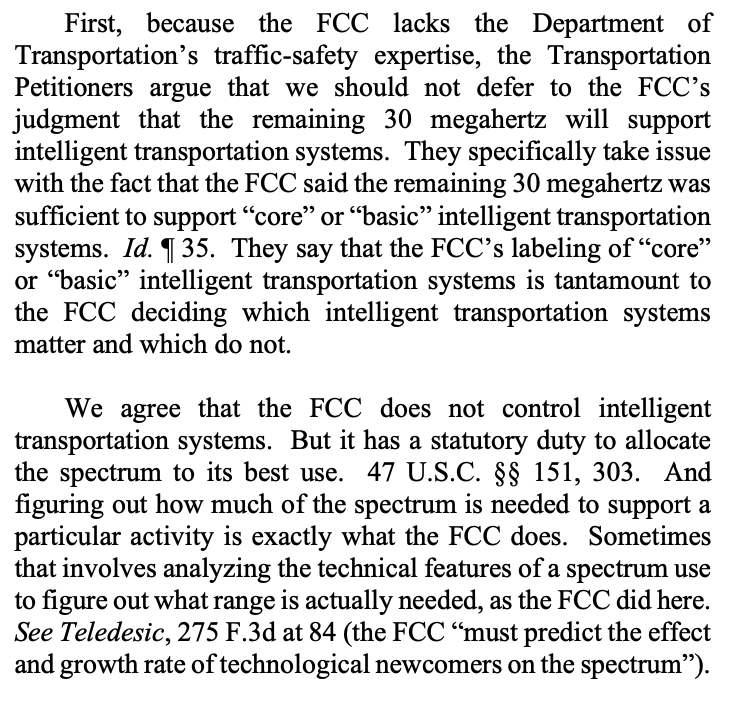
And with that, please enjoy a chart-free weekend.
* Instead of spending all day working on charts, I probably should have just done that! I don’t think I’ve mislabeled any cases this week (the money category was hard, especially because cases like Racing Enthusiasts included both enthusiasts and suppliers and, obviously, Oglala Sioux Tribe was about much more than just money). But it takes a lot of time to read 15 opinions.
D.C. Circuit Review – Reviewed is designed to help you keep track of the nation’s “second most important court” in just five minutes a week.



